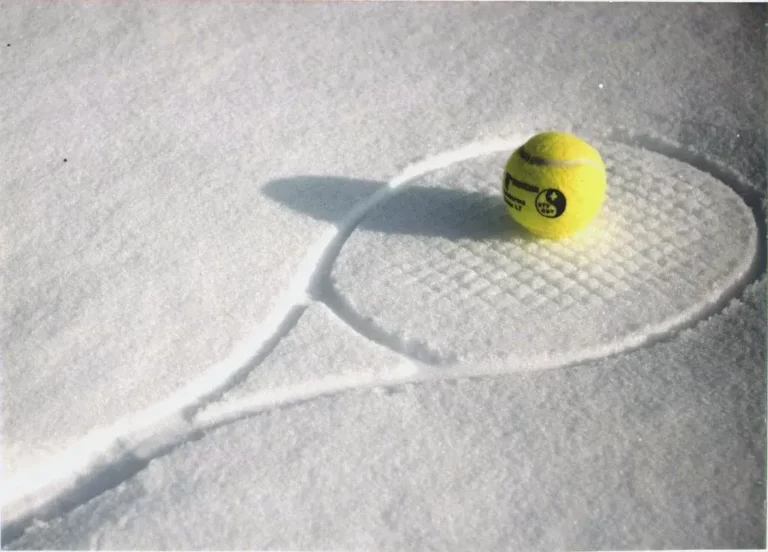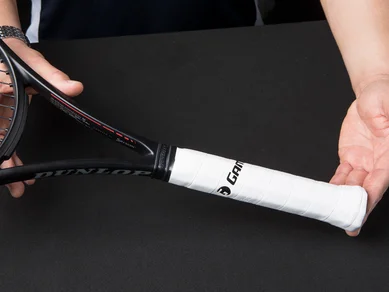How Much Wind Is Too Much For Tennis?
We all love hitting the court and having fun with our favorite sport. But what? We all enjoy getting out on the court and playing our favorite sport. But what happens when the wind decides to join the game? It might not be easy to play tennis in windy circumstances. Therefore, it’s essential to understand how much wind is too much.
Generally, winds over 20 mph (32 kph) are deemed too strong for tennis. At this point, the wind substantially impacts player control and ball trajectory, making it challenging to play the game effectively.

In this article, we’ll examine the impacts of playing tennis in windy situations and offer some practical tips for maintaining a solid performance in windy conditions. So let’s get started!
An Overview Table Of Wind Speed
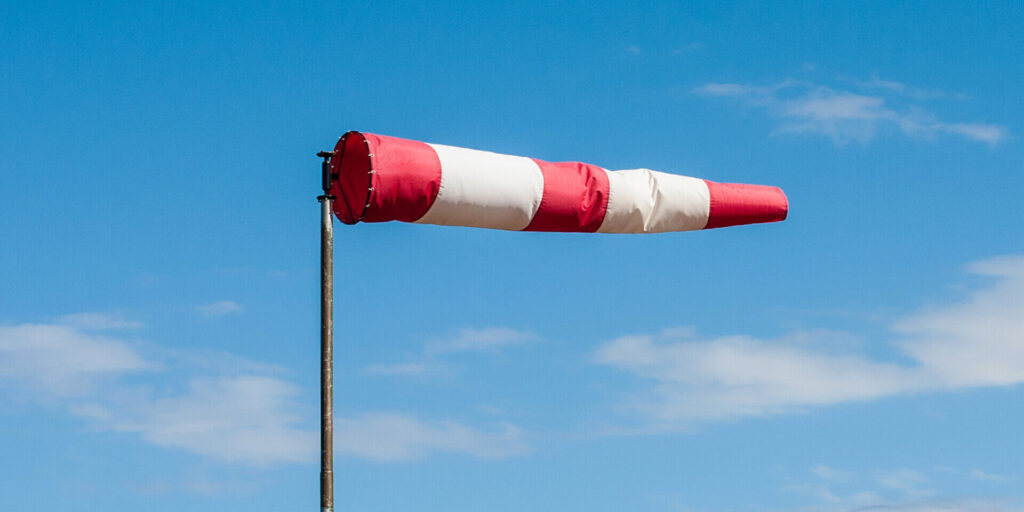
Here, I have provided a small table that will make it easier for you to understand. With the wind speed in miles per hour (mph), kilometers per hour (km/h), and knots, along with the appropriate tennis difficulty levels:
| Wind Speed (MPH) | Wind Speed (km/h) | Wind Speed (Knots) | Difficulty |
| 0 | 0 | 0 | Easy |
| 5 | 8 | 4 | Easy |
| 15 | 24 | 13 | Moderate |
| 20 | 32 | 17 | Moderate |
| 25 | 40 | 21 | Challenging |
| 26+ | 40+ | 21+ | Very Challenging |
Wind speeds up to 5 mph are shown in this table as suitable for playing tennis. The difficulty level increases to a medium between 15 and 20 mph and playing tennis at 25 mph or more is difficult. The game can be substantially impacted by wind gusts of 26 mph or more, which makes it difficult to control the ball and maintain steady play.
What Are the Effects of Playing Tennis When It’s Too Windy?

Playing tennis in excessively windy conditions can significantly affect various aspects of the game. Let’s explore how the wind can impact different elements of tennis:
Serve
Windy conditions make serving challenging with unpredictable ball trajectories, resulting in more double faults and reduced power.
The Trajectory of the Ball
The wind pushes the ball off course, causing shots to land shorter or longer than intended, mainly affecting flat shots.
Speed of the Ball
Not only does the wind affect the trajectory, but it can also alter the ball’s speed. Against the wind, your shots might slow down, while with the wind, they could gain extra speed. These variations require quick thinking and adjustments.
Ball Bounces
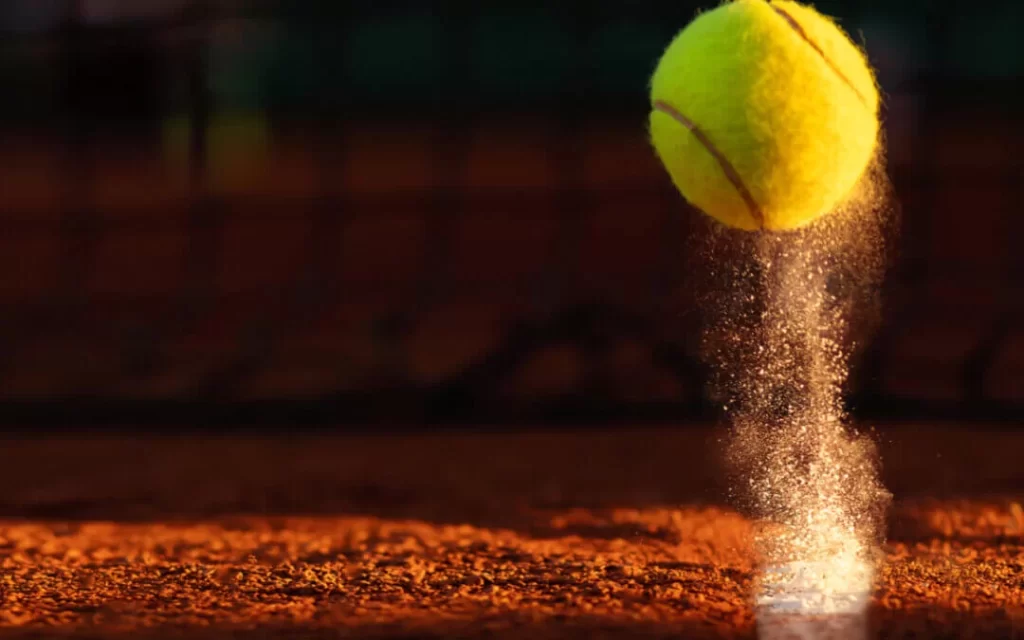
The wind affects ball bounces after landing, making timing shots difficult, especially during groundstrokes and volleys.
Mental Challenges
Playing tennis in windy conditions can be mentally challenging. It can be frustrating to see your shots go off course repeatedly. However, staying positive and focused on the game is the key to overcoming this mental hurdle.
Increased Unforced Errors
Wind-induced unpredictability leads to more unforced errors, causing shots to sail wide or long.
Longer Rallies
Players adjust shots to counteract wind, resulting in longer rallies and increased physical and mental fatigue.
Altered Playing Styles
Players must modify styles, using more topspin and slice to stabilize shots in extreme wind.
Difficulty in Net Play

Wind affects net play, requiring careful approach and volley selection to deal with lobs and disrupted volleys.
Fatigue and Physical Strain
Gusty wind demands extra effort, causing players to experience fatigue and physical strain. Conditioning becomes crucial for optimal performance.
Please watch the provided YouTube link and seek further assistance as needed.
Advantages of Playing Tennis in the Wind
Playing tennis in windy conditions may seem like a disadvantage, but believe it or not, there are some surprising advantages to embracing the wind on the court. Let’s explore how playing tennis in the wind can work in your favor and benefit your overall game:
1. Developing Adaptability
Tennis in windy situations requires quick game adaptation. Your shots and strategy must always be adjusted due to the constantly shifting wind directions and intensities. You’ll improve your capacity to manage various challenging situations on the court as you become more adaptive, which will help you become a more well-rounded player.
2. Improving Shot Variety
Windy circumstances encourage experimenting with alternative shots like topspin or slice to manage how the ball moves. Your game will become more adaptive and versatile due to experimenting with numerous strategies.
3. Enhancing Your Tennis IQ

On the court, wind necessitates critical thought. Evaluating how the wind impacts shots and your opponent’s strategy to alter them would be best. This raises your tennis IQ, enabling you to make more informed choices throughout games.
4. Testing Mental Toughness
The windy play presents a mental challenge because unexpected mistakes can occur. By overcoming such obstacles, you develop mental fortitude, which will help you remain composed under pressure and game-focused.
5. Gaining a Competitive Edge
You have an advantage over opponents who avoid such conditions if you play in the wind frequently. You gain an advantage and become more adept at controlling erratic ball motions and maintaining calm in competitive situations.
6. Preparing for Tournament Play

Events often take place in windy conditions. You get ready for similar conditions by practicing in the wind, which increases your confidence during competitive play.
7. Enjoying a Unique Tennis Experience
Tennis in the wind can be fun, albeit it can be difficult. By accepting its unpredictable nature, the court becomes more exciting and unforgettable.
Here, I have included a YouTube video that offers many helpful tips for you to benefit from.
Disadvantages of Playing Tennis in the Wind
1. Reduced Ball Control
Your ball control can suffer from wind, which can result in careless mistakes and frustration. Consistency in your shots might be challenging to maintain.
2. Altered Strategy and Tactics
It would be best to modify your plan and tactics when it is windy outside quickly. Sticking to your original game plan could be difficult, but Adaptability can give you a competitive advantage.
3. Physical Strain and Fatigue
More physical effort is required when playing in windy conditions to account for the wind’s effect on the ball. Longer matches may result in greater exhaustion as a result of this.
Strategies for Playing Tennis in Windy Conditions

Tennis can be challenging to play in windy circumstances, but with the appropriate tactics, you can stay in the game and use the wind to your advantage. Let’s look at some valuable tactics to assist you in playing such windy matches like a pro:
1. Adjust Your Footwork
In windy situations, footwork is essential. Keep your movements flexible and be prepared to react swiftly to the ball’s shifting trajectory. Take shorter steps to keep your balance and control, and make it simpler to change directions when necessary. The wind can take you by surprise, so stay alert and prepared to take action.
2. Modify Your Grip
To keep control over your shots in windy circumstances, it’s crucial to have a solid hold on your racket. To lessen the possibility of your racket twisting in your hand due to the wind’s power, think about choosing a somewhat more compact grip. By experimenting with it during warm-up, find the grip that delivers maximum stability without compromising strength and comfort.
3. Use the Wind to Your Advantage

Utilize the extra power the wind offers when hitting with it at your back to quicken the tempo of your shots. Increase your shooting volume and attack the goal to put pressure on your rival. However, exercise caution while hitting the wind because it can cause the ball to slow down and make it simpler for your adversary to launch a counterattack.
4. Stay Patient and Focused
Although playing in windy circumstances can be frustrating, it’s important to maintain calm and concentration. Accept that not all shots will go as planned and try to stay optimistic. Play your best tennis, and when the wind changes, adjust your approach. Remember that you and your opponent are coping with the same circumstances, so maintaining your mental fortitude might offer you a significant advantage.
5. Watch Your Toss on Serves
Windy circumstances can make serving more difficult. Please pay special attention to your toss because the wind can quickly blow it astray. Decide to toss a little lower than usual, and be ready to alter mid-serve if necessary. To increase your confidence in your ability to manage your toss and adequately execute your serves, practice serving in windy situations.
I have added a short clip from YouTube with numerous helpful tips.
6. Keep Your Shots Low
High shots are considerably more unpredictable due to the wind’s more significant influence. Shots that are low over the net will assist in lessening the impact of wind on the ball’s trajectory. In windy conditions, groundstrokes with flatter trajectories tend to be more stable, enabling you to keep better control.
7. Utilize Spin
Your shots will be more accurate, and their trajectory will stabilize if you add Spin. Topspin shots frequently descend swiftly, which increases their dependability in the wind. Slice shots are also helpful for approach shots and defensive play since they cut through the wind. You gain the Adaptability to deal with various wind conditions by mastering different spins.
8. Adjust Your Serve Placement
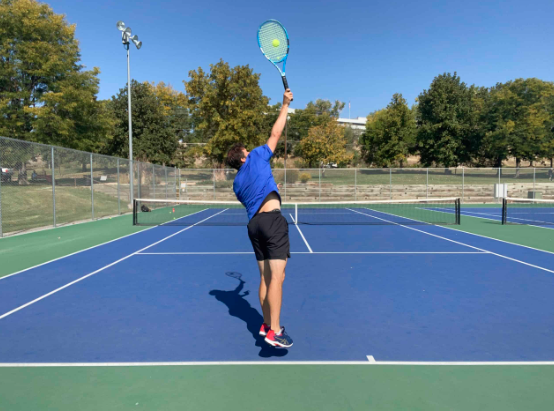
Consider changing your serve placement in windy circumstances to take advantage of your opponent’s limitations. If they have trouble with low balls, target their backhand or try to hit the corners to make it challenging for them to time their return. A strategic serving might offer you an advantage by keeping your opponent off balance.
9. Be Prepared for Lobs
Your adversary might try more lobs to benefit from the unexpected ball movement in windy circumstances. Track down lobs fast, be prepared to move swiftly, and think about using overhead smashes to put the ball away effectively. Getting better at overhead strokes will increase your comfort level when dealing with lobs in windy situations.
FAQs
Q1: Can I still play my best tennis in windy conditions?
Yes! You can adjust to the wind and give your best effort using the proper methods and mindset.
Q2: Which shots are most effective in windy conditions?
Due to their ball trajectories, topspin, slice, and drop shots are typically more successful in windy conditions.
Q3: How do professional players handle windy matches?
Professional players can modify their game to windy circumstances since they have years of experience and are flexible.
Q4: Can playing tennis in the wind improve my overall game?
Yes! It can. Windy circumstances present difficulties that can increase your Adaptability, shot diversity, and mental toughness.
Q5: Should You Play Tennis in Windy Conditions?
It depends on the level of play and personal inclination to play in windy conditions. Windy circumstances can make the game fascinating and unpredictable for casual players. Professional athletes, on the other hand, might like calmer surroundings to preserve their accuracy.
Conclusion
Wind speeds exceeding 20 mph (32 kph) are considered too much for tennis. Tennis in windy circumstances can present a variety of difficulties and opportunities. Success depends on knowing how the wind influences the game and using the right tactics. So the next time the wind blows on the court, use the opportunity to improve your abilities and elevate your tennis game!
REFERENCES
- https://www.reddit.com/r/tennis/comments/pyx9u/windy_conditions/
- https://www.quora.com/Does-playing-tennis-in-the-wind-improve-your-game-for-when-there-is-no-wind
- https://www.menstennisforums.com/threads/at-what-speed-wind-should-a-match-be-delayed.964520/
- https://tt.tennis-warehouse.com/index.php?threads/how-windy-is-too-windy-for-you.716648/
- https://www.google.com/url?esrc=s&q=&rct=j&sa=U&url=https://www.quora.com/How-should-I-play-tennis-in-windy-conditions&ved=2ahUKEwis65WcnM2AAxUhVqQEHXc9ARQQFnoECAkQAg&usg=AOvVaw0ZmFHGNqh5ka16l_G5LxkZ

